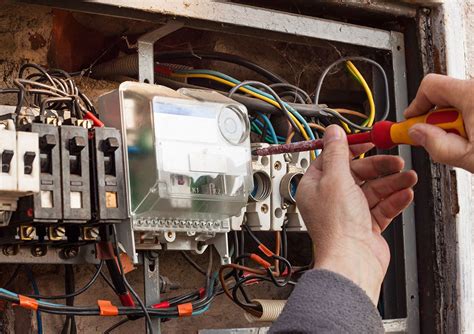Business-focused mechanical engineering industry support solutions.
Business-focused mechanical engineering industry support solutions.
Blog Article
Leading Tips for Effective Electrical System Troubleshooting
Troubleshooting electrical systems needs a methodical method, based in a detailed understanding of electric principles and safety protocols. By acquainting oneself with circuit components, using crucial tools, and adhering to an organized evaluation approach, professionals can properly identify and solve issues. The subtleties of effective repairing prolong beyond simple technical understanding; understanding how to record findings and prioritize security can considerably influence results. As we check out these critical components even more, it ends up being clear that mastering this procedure is not just useful but important for success in the area.
Understand the Basics
Recognizing the fundamentals of electric systems is necessary for reliable troubleshooting, as a solid foundation enables specialists to diagnose and deal with problems more successfully. A comprehensive understanding of electric principles, such as voltage, existing, resistance, and power, is important in identifying the origin triggers of issues. Voltage is the electric prospective distinction that drives current with a circuit, while resistance opposes the circulation of current, affecting the general capability of the system.
Knowledge with circuit parts, consisting of resistors, capacitors, diodes, and changes, is likewise vital. Each element plays a distinct duty in circuit actions and can influence efficiency when malfunctioning. Additionally, recognizing collection and identical circuit arrangements is important, as these setups affect the distribution of voltage and present within the system.
Furthermore, knowledge of safety and security procedures is essential. Specialists have to understand possible dangers, such as shock and brief circuits, to implement risk-free troubleshooting techniques. By understanding these fundamental concepts, specialists improve their capability to carry out efficient diagnostics and repairs, inevitably leading to enhanced efficiency and reliability of electric systems. This fundamental expertise is the keystone of effective repairing undertakings.
Gather Necessary Devices
Efficient troubleshooting of electrical systems requires the best set of devices to identify and resolve issues accurately. Essential devices include a multimeter, which determines voltage, current, and resistance, allowing for accurate examinations of electric parts.
Additionally, protected hand tools such as screwdrivers, pliers, and cable strippers are important for safely manipulating electric links. It is likewise recommended to have a circuit tester handy to verify the existence of voltage in electrical outlets and cables. For even more facility systems, a thermal imaging electronic camera can aid discover overheating elements, indicating possible failures.

Follow a Systematic Approach
Having actually gathered the appropriate devices, the following step in troubleshooting electric systems is to adhere to a systematic strategy. A methodical strategy makes sure that professionals can determine mistakes successfully and precisely, lessening downtime and preventing unnecessary repair services.
Begin by reviewing the system's schematic diagrams and requirements. Recognizing the design and functional parameters will certainly give context for identifying concerns. Next off, separate the issue location by using a process of elimination. This involves checking each component methodically, beginning from the power source and working in the direction of the lots.
Utilize screening devices, such as multimeters and oscilloscopes, to gather objective information concerning voltage, current, and resistance at numerous factors within the system. This empirical proof will assist your troubleshooting initiatives and aid to confirm or remove possible sources of failing.
Furthermore, take into consideration environmental aspects that may influence the system's efficiency, such as temperature level variations or moisture ingress. A detailed assessment of circuitry, links, and components will make sure that all possibilities are made up.
Paper Your Findings
Extensive paperwork is crucial in the repairing process of electrical systems. This practice not only help in recognizing the origin great post to read cause of the problem yet likewise offers as a reference for future fixing initiatives.

Furthermore, preserving a log of parts replaced or repair services performed is important. This details sustains supply administration and can aid evaluate the durability and integrity of specific parts.
Ultimately, the documentation process need to be detailed yet concise, enabling easy retrieval and review - electrical system troubleshooting. By focusing on comprehensive documentation, technicians can produce a beneficial understanding base that not just aids in existing troubleshooting yet additionally encourages future maintenance initiatives, therefore enhancing total system integrity

Prioritize Precaution
Identifying the fundamental dangers related to electrical systems is vital for ensuring security during troubleshooting. Electric shock, burns, and devices damage are just a few of the potential hazards that specialists deal with. Focusing on security procedures is not only a legal commitment however likewise an ethical necessary that safeguards both the professional and the surrounding environment.
Before commencing any troubleshooting task, professionals should don appropriate personal protective equipment (PPE), consisting of insulated gloves, shatterproof glass, and flame-resistant garments. Making sure that the workplace is dry and cost-free of mess can considerably decrease the danger of accidents. It is crucial to de-energize circuits prior to beginning any type of work, verifying that they are not live via the use of a multimeter or voltage tester.
Establishing clear interaction procedures with group participants i was reading this is also crucial; this guarantees that everybody is conscious of potential hazards and the status of the electric system being functioned on. Last but not least, having an emergency feedback strategy in place can confirm vital in case of a case. By focusing on precaution, professionals can properly alleviate risks and foster a more secure work environment.
Final Thought
Effective electric system fixing depends on a thorough understanding of essential principles and a systematic method. By collecting necessary tools, sticking to methodical evaluation strategies, and carefully recording findings, the repairing process comes to be a lot more efficient and trusted. Prioritizing precaution ensures the wellness of people included and the honesty of the electrical system. Applying these techniques will certainly enhance the fixing experience, leading to quicker resolutions and enhanced functional effectiveness in electric systems.
Report this page